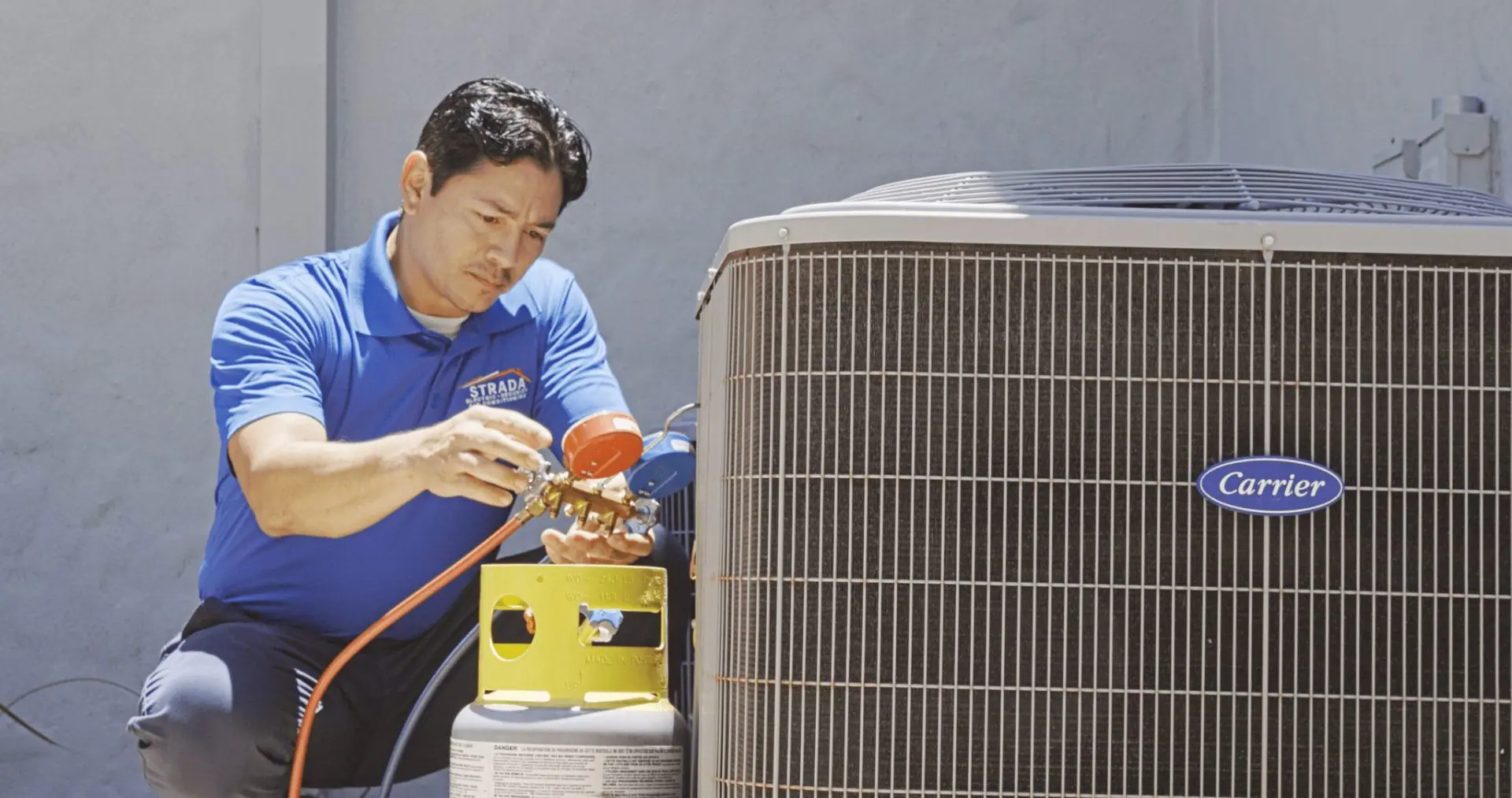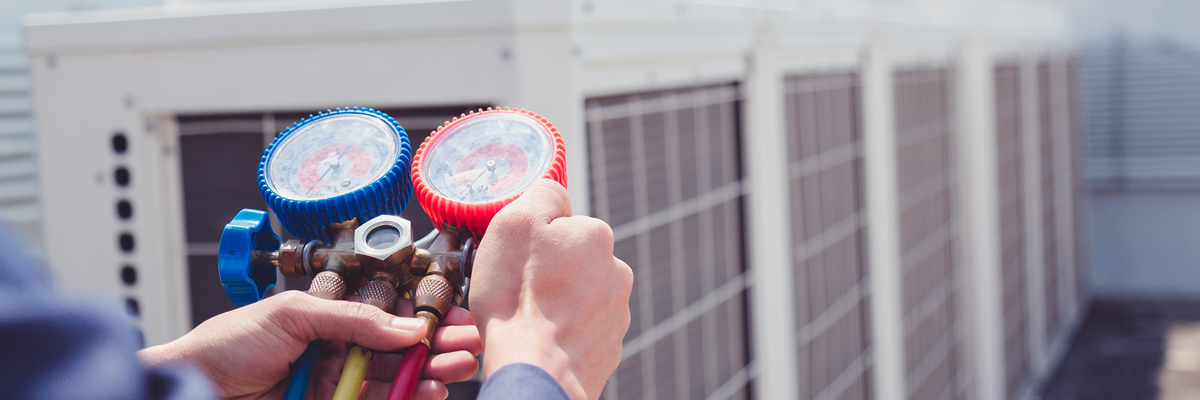How a Warm Pump and Heater Collaborate to Enhance Your Home's Home heating Performance
Recognizing just how a warmth pump and heater job together is necessary for home owners looking for efficient heating services. Each system has its strengths, offering a well balanced technique to home comfort. The heatpump succeeds in modest temperatures, while the heating system supplies fast warmth throughout severe cold. This synergy not only minimizes power expenses however also enhances the lifespan of both devices. What variables influence this cooperation, and just how can house owners optimize their benefits?
Recognizing Warmth Pumps: Just How They Function
Although lots of people may be unfamiliar with their internal functions, heatpump play a necessary role in modern heating unit. These devices run by transferring warmth from one area to one more, making use of the concepts of thermodynamics. In chillier months, a warmth pump essences warmth from the outdoors air, ground, or water, and transfers it indoors to heat the space. Conversely, throughout warmer months, it can reverse the procedure, acting as an air conditioning unit by eliminating heat from inside to the outside.Heat pumps contain an evaporator, growth, condenser, and compressor shutoff. The refrigerant within the system soaks up warmth as it evaporates at reduced temperature levels and pressures. The compressor then increases the pressure and temperature level of the refrigerant, permitting it to launch heat as it condenses. This effective process can considerably lower power usage compared to standard home heating approaches, making warmth pumps a sustainable option for environment control in homes.
The Role of Furnaces in Home Heating
Heaters play an important function in home heating by supplying a dependable source of warmth during the chillier months. They operate by producing warm via burning or electrical resistance, dispersing it throughout the home via ducts or radiant systems. The effectiveness of a heating system is often measured by its Yearly Gas Utilization Efficiency (AFUE) ranking, which shows just how properly the device transforms gas right into heat.Furnaces can use various energy sources, consisting of gas, gas, electrical energy, or oil, enabling home owners to pick one of the most appropriate option for their demands. Unlike warm pumps, which may have a hard time in extreme chilly, furnaces keep regular performance, making certain that indoor temperature levels stay comfortable no matter exterior conditions. In addition, contemporary furnaces frequently come outfitted with sophisticated innovation, such as clever thermostats and variable-speed blowers, enhancing their efficiency and responsiveness. This convenience makes furnaces a critical part in all-inclusive home heating strategies.

Benefits of Making Use Of Both Solutions Together
Integrating the toughness of both heating systems and heatpump can lead to a much more reliable and effective home heating solution. Using both systems permits property owners to make the most of the warm pump's energy efficiency throughout milder temperatures while counting on the heating system for even more extreme cold conditions. This dual technique can greatly minimize energy expenses, as warmth pumps consume less electrical energy than conventional home heating techniques when temperature levels are moderate.Additionally, making use of both systems with each other can improve convenience degrees in the home. Heat pumps can provide regular, also heating, while heating systems can rapidly increase ambient temperature levels when required. Moreover, the assimilation of both systems can extend the lifespan of tools by decreasing deterioration on each system, as they share the work. Ultimately, home owners can delight in a balanced, economical home heating service that readjusts seamlessly to varying weather condition problems, making sure a cozy and inviting home throughout the wintertime months.
Exactly How Warmth Pumps and Furnaces Complement Each Other
When property owners integrate heat pumps and heaters, they produce a complementary heater that makes the most of effectiveness and comfort. Heatpump operate by transferring warmth from the outdoors air or ground, making them highly reliable in moderate climates. They excel during milder temperature levels, offering cost-efficient heating. Conversely, heaters generate warmth via combustion or electrical resistance, delivering solid, immediate warmth throughout extreme chilly conditions.The combination of these two systems enables for dynamic adjustments based upon temperature level fluctuations. During warmer months or milder winter months days, the heat pump can take the lead, conserving energy and minimizing costs. As temperature levels decrease, the furnace can seamlessly engage, making sure constant heat throughout the home. This synergy not only maximizes energy use however likewise boosts the lifespan of both systems, as each unit operates within its Learn More ideal efficiency variety. With each other, they produce a well balanced setting that adapts to varying environment demands.
Optimizing Efficiency: Tips for Homeowners
Property owners can improve their heating effectiveness through several practical methods. Developing a regular maintenance timetable, incorporating smart thermostat innovation, and executing efficient insulation and sealing options are key steps. These procedures not just boost comfort but also reduce energy expenses.
Routine Maintenance Arrange
To assure optimal home heating effectiveness, developing a normal upkeep timetable is important for any kind of home. House owners must focus on regular inspections of both heat pumps and furnaces to establish peak performance. This consists of changing air filters each to 3 months, as stopped up filters can considerably minimize effectiveness. Furthermore, scheduling professional upkeep at least as soon as a year enables technicians to determine and deal with potential issues before they escalate. Home owners need to additionally cleanse the warm pump's outdoor device to prevent particles buildup that can prevent air flow. By adhering to a normal maintenance timetable, home owners not just enhance their heating unit' performance but additionally extend their life-span, bring about higher convenience and decreased power expenses throughout the cooler months.
Smart Thermostat Combination
Integrating a wise thermostat right into a home heating unit can considerably improve energy effectiveness, especially as it permits precise control over temperature settings. These gadgets can discover the house owner's routine and choices, instantly readjusting the temperature level to enhance convenience while lessening energy use. They can decrease heating throughout times when the home is vacant, minimizing unnecessary usage. Numerous smart thermostats also provide real-time energy use data, making it possible for property owners to make informed choices regarding their heating practices. Additionally, remote accessibility through smartphone applications allows customers to change settings from anywhere, ensuring the home is cozy upon return. Overall, wise thermostat combination not only improves comfort but considerably adds to power savings and efficiency.
Insulation and Securing Solutions
Smart thermostats play a vital duty in power efficiency, however their effectiveness can be considerably enhanced by appropriate insulation and securing remedies. House owners should focus on protecting attic rooms, wall surfaces, and floors to lessen warmth loss. Top notch insulation products, such as spray foam or fiberglass, can greatly improve thermal resistance. Furthermore, securing voids around windows, doors, and air ducts avoids cold air seepage and warmth retreat. Weatherstripping and caulking work approaches for attending to these leakages - ductless mini splits. Routine inspections for air leaks, along with the use of blower door examinations, can aid identify problem locations. By purchasing insulation and securing, homeowners can optimize the efficiency of their heating systems, ultimately resulting in decreased power intake and reduced energy expenses
Typical Misconceptions Regarding Warmth Pumps and Furnaces
What false impressions surround heatpump and furnaces? Many individuals wrongly believe that heat pumps are inadequate in colder climates. Actually, modern-day heatpump are developed to operate successfully even in reduced temperature levels, giving reputable heating throughout winter months. An additional typical myth is that furnaces are always more reliable than heatpump. Nevertheless, this depends upon the specific power sources and effectiveness ratings of the devices concerned. Some may also assume that making use of both systems all at once is unnecessary, yet in truth, this combination can maximize heating efficiency, specifically throughout extreme climate condition. In addition, people frequently think that heatpump require continuous upkeep, when actually, they have similar maintenance requires to conventional heating systems. By disproving these myths, house owners can make more enlightened decisions regarding their home heating options, eventually leading to enhanced convenience and power effectiveness in their homes.
Upkeep Factors To Consider for Combined Systems

Often Asked Questions
Can Heat Pumps Job Successfully in Incredibly Cold Climates?
Heatpump can struggle in extremely chilly climates due to lowered efficiency and heat removal constraints. Improvements in innovation have led to versions developed for better performance in such conditions, boosting their viability in severe atmospheres.
How Much Time Do Heat Pumps and Furnaces Usually Last?
Heatpump typically last 15 to twenty years, while furnaces have a life-span of 15 to three decades. Routine upkeep can extend their long life, making certain effective procedure and reducing the demand for premature substitutes.

What Is the Typical Cost of Setting Up Both Solutions?
The ordinary expense of mounting both a heat pump and a heater normally ranges in between $5,000 to $10,000 - heat pump installation ooltewah tn. Elements affecting this cost consist of system size, installment complexity, and regional labor rates
Exist Tax Rewards for Using Energy-Efficient Heating Systems?
Several property owners make inquiries about tax obligation motivations for energy-efficient heating systems. Different government and state programs typically offer debts or refunds, urging the adoption of sustainable innovations to minimize power intake and advertise ecological responsibility.
Just how Do I Choose the Right Size Heat Pump and Heating System?
Picking the right size warm pump and heating system entails calculating the home's square footage, thinking about insulation high quality, and examining local environment. Consulting a specialist can guarantee perfect system efficiency and power effectiveness based upon details needs. heat pump installation ooltewah tn. Understanding just how a warmth pump and furnace work with each other is essential for homeowners seeking efficient heating remedies. In cooler months, a warm pump removes warm from the outside air, ground, or water, and transfers it indoors to warm up the living room. When home owners incorporate warm pumps and furnaces, they develop a corresponding home heating system that optimizes effectiveness and comfort. Heat pumps run by transferring heat from the outdoors air or ground, making them extremely efficient in modest climates. Heat pumps can battle in exceptionally chilly climates due to minimized performance and heat removal restrictions